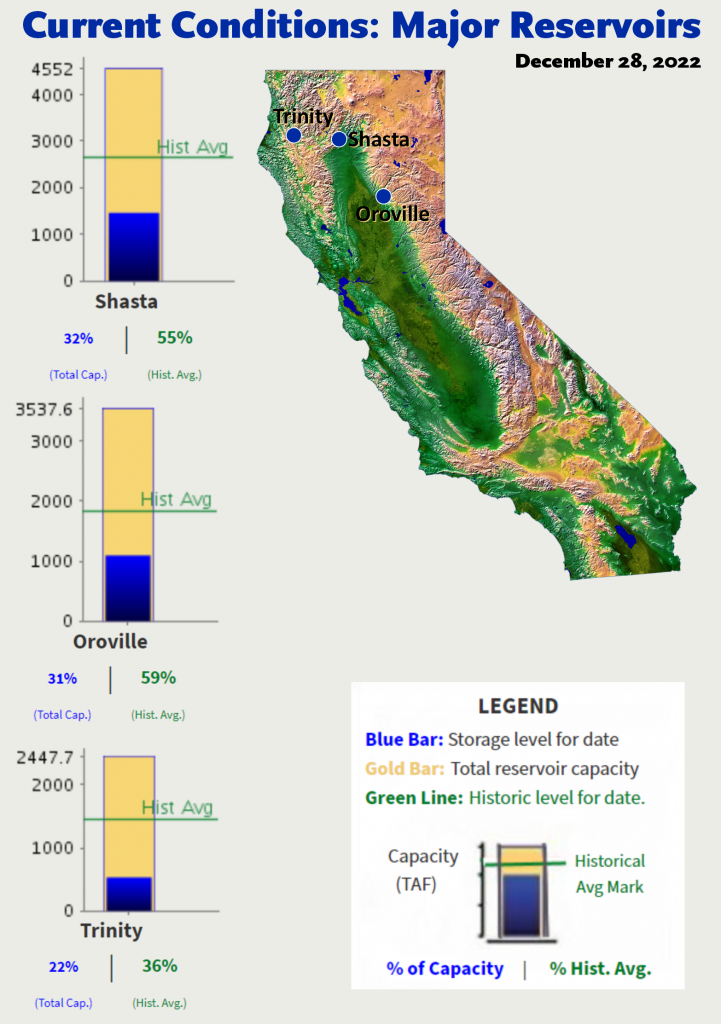
A year-end status check of levels at 17 of California’s major water supply reservoirs reveals that our recent storms, while certainly helpful, would need to be repeated several times over early in the new year to get the Golden State on track to end the ongoing drought, now beginning its fourth year. The three-year period from 2020 to 2022 is now the driest on record dating back to 1896, and the long-range forecast suggests drier-than-average conditions will persist.
Only one of these 17 major reservoirs – Millerton Lake along the eastern edge of the Central Valley – is currently above the historical average level, at 135% of normal. In contrast, the largest reservoirs in the state system, Shasta, Oroville and Trinity, are currently at 55%, 59% and 36% of their historical averages, respectively. (A longer list including smaller reservoirs is available here: http://cdec.water.ca.gov/reportapp/javareports?name=RES.)
On a positive note, California’s snowpack is shaping up more to our liking, although it’s still early in the season. We need snowpack to fill our reservoirs and rivers. Statewide, our snowpack is currently at 162% of normal levels for this date. The Northern Sierra/Trinity region is currently at 133% of normal, the Central Sierra is at 160%, and the Southern Sierra is at 193%. However, the statewide average is still only 51% of the normal level for April 1, traditionally the end of the state’s major precipitation period, so again, we would need storms throughout the early part of the year to keep up the pace. (See a broader set of snowpack data from DWR here: http://cdec.water.ca.gov/snowapp/sweq.action)
Californians are reminded to save water by not watering lawns or ornamental landscapes within 48 hours of rain events. More tips on saving water here: https://saveourwater.com



Pingback: Legislative Bulletin January 3, 2023 – California Cattlemen's Association